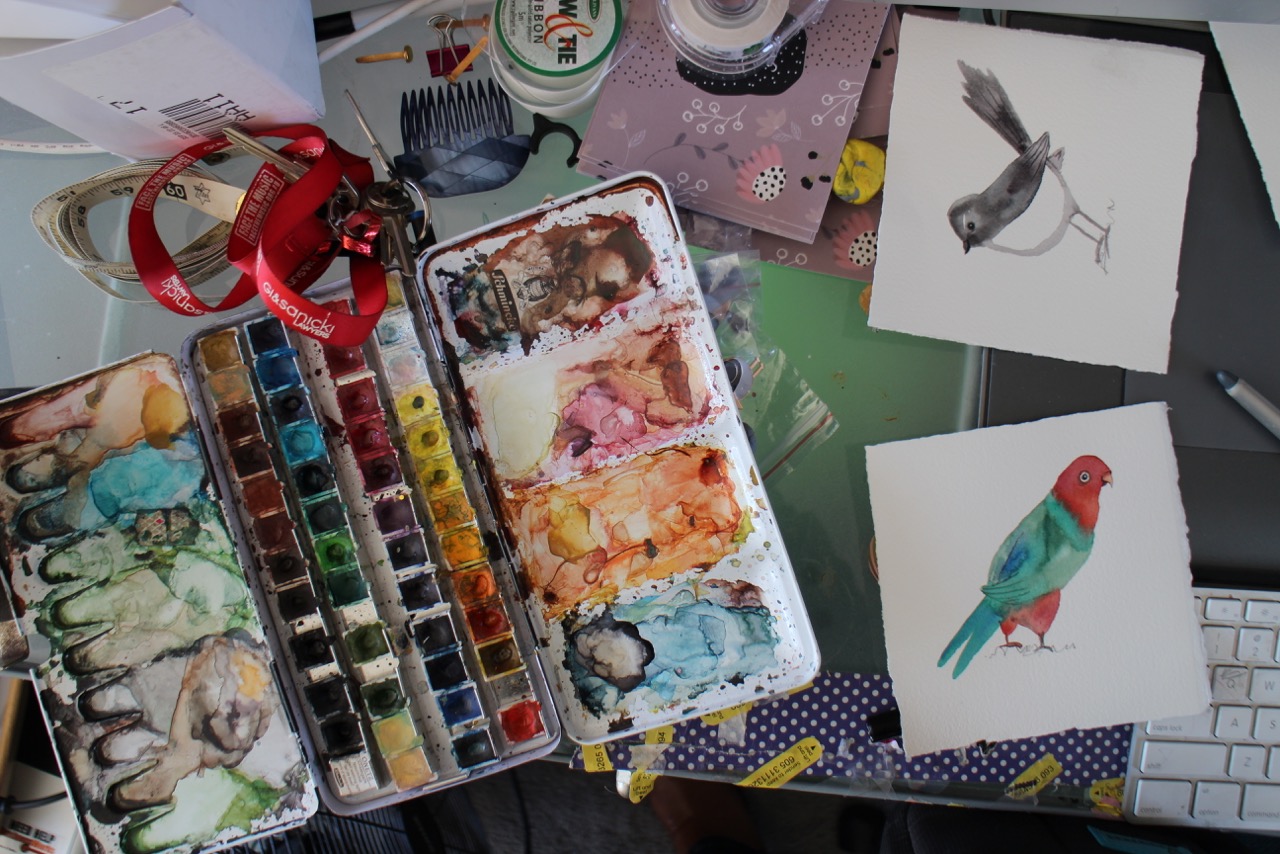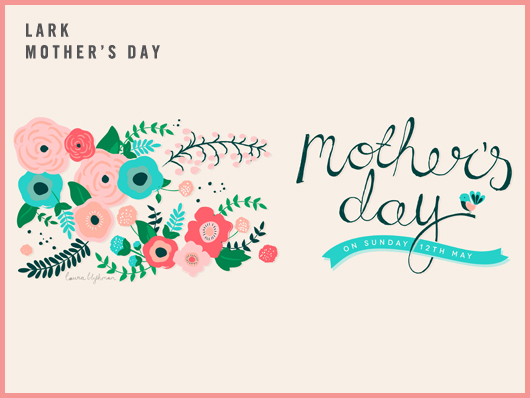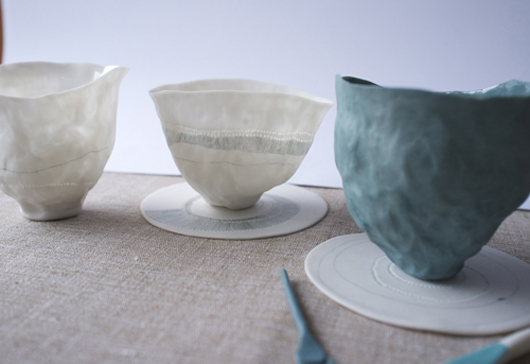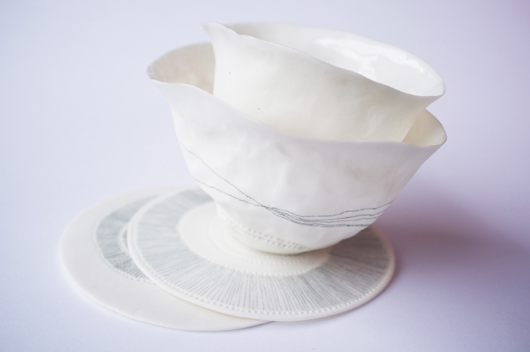How to stay "Instasafe" as a creative
I love Instagram. It lets me communicate to the world what I'm about (nourishing food, natural light and comfortable shoes wherever possible, and preventative health in life, law and business!), and has allowed me to connect with so many like-minded clients...
Photo via Pexels
I love Instagram. It lets me communicate to the world what I'm about (nourishing food, natural light and comfortable shoes wherever possible, and preventative health in life, law and business!), and has allowed me to connect with so many like-minded clients through my page @thelawyerslunchbox.
And I know many of my clients loving using it for their own businesses.
But we all need to make sure we stay legally safe on Instagram. This means not falling foul of Insta's terms and conditions, using the right images and not saying or doing anything illegal.
Here are some tips...
Types of images
Instagram has the right to remove, edit, block, and monitor accounts containing content that Instagram determines violates their terms of use.
To avoid problems, you must not post violent, nude, discriminatory, unlawful, infringing, hateful, pornographic or sexually suggestive photos. This term is interpreted sensibly, for example if your business is in fashion, intimate apparel, swimwear, music, celebrity, modelling etc, photos may be quite sexual without causing any trouble. But nudity, or pornographic inference (even if digitally-created), will not be okay. Use common sense when thinking about what Instagram and its diverse audience may find offensive. Nudity in photos of drawings, paintings and sculptures will be acceptable, as will photos of mastectomy scarring and breastfeeding women.
If your business is related to children or you like to share photos of your own family, be mindful of the broad audience that they may be open to. Photos of nude or partially nude children may be removed, even if they seem innocent and are being shared with the best intention. Instagram’s aim here is to ensure that they don’t fall into the wrong hands.
Copyright
You can only use images that do not infringe others’ intellectual property rights. If you are posting authentic images created by you or your business (such as your own photos, photoshoots, illustrations, videos, or graphics) then this is not an issue. But if you want to post an image found online, then you must be vigilant. There are millions of high-quality graphics and photos online available for free commercial use. Many websites curate images in the public domain, and you are free to use them in any way. In most cases, you do not have to provide attribution. But check the terms of the site to make sure. If attribution is
required, check what format.
It is best to assume every image you find online is copyrighted – a copyright notice is not legally required as notification of copyright, so the absence of a © or watermark isn’t a sign that no copyright exists. If an image is covered by copyright, the copyright holder may agree to some uses but not others. You must check this before using the image.
If you alter a copyrighted image, it does not relieve you from potential liability. If you repeatedly infringe other people’s intellectual property rights, Instagram will disable your account.
On Instagram, you are liable for what you upload. This means you are legally responsible for copyright violations even if you hire a social media professional who chose and used the offending image. It is important to ask your social media manager where they source their images from. You should contractually ensure that if an image they use is found to violate copyright and you are required to pay, that they will indemnify you.
Music is covered in the same way as images, and you are not allowed to use music that you don’t own the rights to, for any commercial or non-personal use. This includes music in videos uploaded to your feed as well as Instagram lives and IGTV, and can extend to music playing in the background of videos.
Photo via Pexels
What you can legally say
Don't copy any other person's written work in your Instagram posts. This may infringe their copyright.
And don't post unwanted comments, likes or other forms of commercial or harassing communication (spam) to Instagram users. This includes repeatedly contacting people for commercial purposes without their consent.
Further, online cyber bullying is a crime in Australia. You must not threaten, harass, or offend someone, stalk someone, access others’ Instagram accounts without permission or defame someone on Instagram.
How to deal with trolls
A troll is a member of an online community who deliberately tries to disrupt that community by posting inflammatory content.
How should you deal with trolls commenting on your business page?
Use Instagram’s built-in reporting option. Instagram will quickly remove content that does not meet community guidelines.
Unfollow or block the person who posted the comment. And delete the trolls’ comment on your post.
Sometimes ignoring a troll is best. If they are looking for a reaction, they may lose interest when you give them nothing.
If the troll is a customer with a complaint, take notice and try to help. Humour can be used to effectively engage unhappy customers and turn them into advocates for your business. Acknowledge yet make light of the situation, and apologise for the customer’s experience.
If the troll is spreading rumours or misinformation, address the issue head-on and retaliate with the truth.
If the troll points out a mistake, look into it, make the proper corrections and admit that you were wrong.
Instagram has the right to modify or terminate your account for any reason, without notice,
and at any time. So stay the right side of their terms and the law.
Jessica Kerr is the director of Sinclair + May. Jessica set up Sinclair + May with a view to do law differently and make legal services accessible for small businesses. Sinclair + May operate on a fixed fee basis and offer retainer services for their clients. Sinclair + May is a female-led, boutique commercial law firm and work extensively with the creative industry. You can follow Jessica on instagram @thelawyerslunchbox for useful legal tips and see more about Sinclair + May at www.sinclairmay.com.au.
Interview and studio visit with Jess Racklyeft
Jess Racklyeft is a freelance illustrator who works from her home studio in North Fitzroy, Melbourne. It’s a two-story building across her courtyard garden that wears many hats. The ground floor serves as a music studio for her husband while the upper floor is Jess’s studio, a granny flat for visiting parents and in-laws and Winston the dog’s day bed.
Jess Racklyeft is a freelance illustrator who works from her home studio in North Fitzroy, Melbourne. It’s a two-story building across her courtyard garden that wears many hats. The ground floor serves as a music studio for her husband while the upper floor is Jess’s studio, a granny flat for visiting parents and in-laws and Winston the dog’s day bed.
Filled with books, papers, artwork and craft-market inventory, Jess’s studio is undeniably, gloriously chaotic. Jess is a whirlwind of activity who clearly adores her job—but she didn’t set out to be an illustrator. As she describes it, ‘I always wanted to work for myself, and I always drew, but I hadn’t been brave enough to put them together.’
A vocation lost and found
When Jess was twelve years old and attending a family friends’ wedding, the photographer asked her what she wanted to do when she grew up. Jess told him that she wanted to illustrate books. It just so happened that this photographer had written a picture book manuscript, which he sent to her afterwards. Jess remembers drawing pictures for it. ‘I did the whole book, but I never sent it back to him. I was too shy,’ she recalled. After that, she forgot about wanting to illustrate books.
‘I had really arty friends at Uni,’ Jess explained, ‘so I didn’t think of myself as arty [by comparison].’ She did a degree in communications in Perth, travelled overseas, then moved to Melbourne and took a job in customer service at Lonely Planet. From there, she was invited to work in a sales role in children’s publishing. That job was a turning point. She attended industry book fairs in Frankfurt and Bologna, saw what it might look like to work as an illustrator and got valuable insight into the business side of selling books.
She used her maternity leave as a window to try working as a self-employed illustrator. ‘I went into a frenzy. Every nap, every spare minute, I was going at it,’ she said. Jess got her big break when a publisher at Omnibus, to whom she’d been submitting her folio on a yearly basis (‘because she sent me an encouraging letter’), offered her a book. That first contract gave Jess the belief she could make a go of it as an illustrator and she’s been doing it ever since.
There’s an urgency to the way Jess works that seems to spring from gratitude and delight at finally doing what she loves. Interestingly, for someone who was once too afraid to show her work, a hallmark of her practice has become posting and sharing illustrations online.
Now working on her ninth picture book, due out in 2018 and tentatively titled Dreaming A to Z, Jess also runs an Etsy store, sells originals on Instagram and has her charming illustrations turned into pins, wall decals, cards and gift wrap. Yes, Jess crams a lot into those two days a week her kids are at childcare. How does she juggle it all?
Jess's artwork next to the printed book.
Jess at work in her studio.
The list
After dropping off her kids, Jess grabs a coffee on her way home and is at her desk by 9 a.m. She starts every workday by making a list. It’s a democratic, back-of-the-envelope affair: a combination of illustration work, business admin and household chores. Jess numbers the items, putting the jobs she least wants to do first. She starts at number one and moves through the list, spending twenty minutes on each item. Anything that can’t be finished in twenty minutes gets revisited later in the day (for another twenty minutes) or goes back onto the list tomorrow.
Jess has been using this system to structure her days for the last couple years. ‘By the end of the day, I know I’ve touched each thing I need to do at least once,’ she said.
Process
Jess has experimented with a bunch of mediums and techniques but watercolour is her favourite. Her approach has evolved from doing illustrations entirely in watercolour to using a combination of watercolour and digital. She often paints the background separately from the foreground elements, then puts them together in Photoshop. This gives her the flexibility to move elements around, lighten or darken them, and have more than one go at people’s faces, which she does digitally. ‘The eyes make such a difference to a picture,’ she explained. ‘With watercolour, you only get one go. If you get it wrong, you’ve killed the picture.’ On her current book—the first one she’s writing as well as illustrating—Jess has digitised her kids’ artwork and is using it to create background textures. ‘Hopefully they won’t sue me when they grow up!’ she said.
Jess considers practicing your craft daily to be the most valuable thing an illustrator can do. Like the small birds she loves to paint, Jess skips lightly over her busy schedule, in constant motion. ‘I chip away at a tiny bit of everything each day,’ she said.
For more about Jess visit jessesmess.com or follow her on Instagram (@jessesmess).
Jo Watson is a Melbourne-based screenwriter and artist. Visit her on Instagram (@diary_of_a_picture_book_maker).
Interview with Deb Hudson, illustrator
Deb Hudson welcomed me into her home for a cup of tea at her rustic kitchen table, which doubles as an art table. Her pencils, organized in tins by colour, are spread out at one end of the table. The room is flooded with natural light. Sometimes, it’s a case of too much of a good thing and Deb has to draw under a brimmed hat, tilted askew to shade the midday sun. Her border collie chases sun shadows about the room and her canary chirrups in the background. Today, her seven-year old son, home from school sick, adds to the menagerie. Deb’s bright, intricate illustrations and daily posting have attracted thirteen thousand followers on Instagram. But as she explains, it took her a while to find her groove.
No, I want to do art In high school, everyone said, “Don’t do art. You’ll never make any money.” So I studied teaching. Then I travelled. I lived in Japan. I taught English at an all-girls school and at an English conversation school. When I was approaching thirty, I was living in the Solomon Islands. I was doing office work. I wasn’t using my teaching degree, and I’d never even really liked teaching. The part I liked most was organising craft activities! I’m not sure—maybe it’s because I thought I hadn’t done anything with my life—but I realized, no, I want to do art.
A degree interrupted I enrolled in fine art at Queensland College of Art. I knew right away I wanted to specialize in illustration. Two years into the three-year degree, I deferred to go overseas again. I had children and, when I wanted to go back to university to finish my degree, I was told I would have to start from the beginning. I didn’t want to do that.
eBay inspo What got me started again was seeing people sell their artwork on eBay. My sister said, “You could do that.” I created a series of three paintings: a bee, a butterfly, and a beetle. I called it The Three Bs. I put them up on eBay. I had tracings of the designs and a stack of blank canvasses. When a set would sell, I’d go out to my workroom and paint them. It was a lot of work: executing, packing, and shipping the paintings. But it was exciting to see my work sell. Then I had my third child and the artwork sort of petered out.
A reboot, by way of adversity I have rheumatoid arthritis. There was a period where I was unwell, and I was really unfit. I couldn’t close my fist for six months. When I got better, I was so happy to be able to hold a pencil that I couldn’t stop drawing. I like drawing birds because they’re a symbol of freedom. Also, you can decorate them however you like. I used to use Gerald, my canary, as a model. Now I’m inspired by folk art.
The pencil person I’ve always used coloured pencils. At university, I was called the “pencil person.” I like them because they’re clean, colourful, and easy to transport.
Last Christmas, I did a series of cards in red and blue. That was good because I only had two tins of colours to pull out and pack up! Sometimes the drawing gets waxy and the white pencil won’t lay down. I spray it with fixative and that helps give it some tooth so the white will stick. People often ask what materials I use: Prismacolour (premier) pencils and plain old Kraft paper.
Online tribe I first saw the 100 Day Project [#100dayproject] three years ago, and decided to try it. Now I’m addicted; I have to do a drawing every day. I also do [Lilla Rogers’s] Make Art That Sells Assignment Bootcamp, which is a five-month online program. I’ve made great friends through those online communities. I use Redbubble to sell my work on a variety of merchandise. I don’t do heaps of marketing. People don’t like it when you use Instagram for advertising. When the Redbubble site features me on their home page, I see an increase in activity. I recently created artwork for the swing tags on a friend’s clothing line. Next, I’d like to execute on the advice I was given by an agent: to design a new collection of greeting cards and refresh my website. With three kids, the challenge is finding the time. But I love it.
For more about Deb Hudson, visit her website or find her on Instragram (@debi_hudson).
Jo Watson is a Melbourne-based screenwriter and artist. Visit her on Instagram (@diary_of_a_picture_book_maker).
Interview with Dawn Tan, illustrator and teacher
One of the greatest gifts that illustrator, teacher, and soapmaker Dawn Tan gives her students is the permission to make mistakes. Having taught art since she was seventeen, as well as working as an illustrator, Dawn embraces the art process as changeable. “If you make a mistake, just go for it,” she said. “Change it up a bit. See how you can do something new out of that mistake that you’ve made.”
Dawn’s “Making Space” Dawn welcomes me into her Yarraville home in Melbourne’s inner west. We can feel it is going to be a warm day, but for the moment we are both thankful for the coolness of her kitchen and dining room.
Dawn’s studio space has a gentle filtered light. The Victorian terrace she shares with her husband, Darren, is filled with art by friends and by artists she admires—such as good friend Madeline Stamer—as well as objects collected on the couple’s travels. A recent trip to the U.S. and India has prompted new designs featuring images and patterns inspired by the American desert and India’s magical colours and spices.
The long wooden table in her dining room is where Dawn creates her illustrations. On the day I visit, the table is neatly arranged with resources for a work in progress. The watercolour painting she shows me is of her client’s grandparent’s home, which Dawn carefully paints with fine detail as a precious memory for her client.
A Creative Life Along with working as a freelance illustrator and having her work published by such clients as Frankie and Hooray magazines, Dawn teaches workshops for adults in her home, and for children as a school art teacher.
In the last six months, Dawn has also discovered a love of making handmade soaps—enticing in both looks and aroma. The packaging for her soaps bears Dawn’s signature watercolour drawings, and the scents include apple cider, Joshua tree cactus, and chai milk tea. “I started making soaps not only because I wanted soap for myself, but because I was going through quite a rough patch when I was teaching and working in my previous school,” she explained. “I found that I needed a way to relax and not think about anything else, to do something different for a change.”
In high school, Dawn had great support from teachers who recognised her natural artistic ability and encouraged her to pursue an artistic career. Her friends and family have also encouraged her to keep going with her art, in part by ordering prints and custom house portraits, buying soaps, and sharing her posts on social media. “A lot of my colleagues were amazing, super troopers, cheering me on,” said Dawn.
The Little Art Yurt In June 2017, Dawn will fulfill her dream of opening her very own art school: The Little Art Yurt. “I’ve always known that I wanted to teach,” she said.
As Dawn awaits delivery of a large round tent, which will fill the entire outdoor space in her courtyard, she prepares for the school—planning, designing brochures, and adding students’ names to the ever-growing waitlist. She already has the most elegantly made aprons ready and waiting for the first class, hung on a plywood rack made by her father-in-law. The Hedley & Bennett aprons are examples of Dawn’s attention to detail: she is sensitive not only to the ways children engage with art, but also to how they feel physically while creating art. The aprons let children move freely without being hampered by stiff, bulky art smocks.
Dawn possesses a true joy of teaching, describing it as something that feeds her creativity. “I find that, especially working with children, they have this sort of crazy, fun energy about them. It makes you learn how to let go and just relax,” she said. “I see it as an exchange of knowledge. I see kids as teachers as well.”
Dawn comes from a family of teachers. “Being able to share what I love—which is art—helps me be inspired. I enjoy having conversations with people, sharing experiences, food, laughs. All these things help me create better as a maker.”
Being an Artist At the end of each day, Dawn makes a deliberate effort to pack all of her work away onto her shelves, a method she has recently adopted. “I used to leave everything out lying on the table,” she said. “I used to have a separate table in a little corner, but then we bought this bigger table and I realised that having this big kitchen table forces me to put everything away. It actually helps me think better and work better because every day is a new fresh start.”
Dawn’s watercolour illustrations are distinctive, with their use of fineliner and watercolour. Layers of watercolour in elegant tones capture doughnuts, cakes, food, plants, houses, and packaged goods. Dawn decided a while ago that drawing people was not for her, preferring to draw inanimate objects. Her style brings the subjects she paints to life, as if we are experiencing them through her eyes. “One word that’s kept coming up over the years is ‘raw’: how my work is so raw, almost like reading through someone’s journal. I like that,” she said.
Dawn is open and honest in the way she shares her life and work online. “When you have a very personal voice—when you’re just you and when you don’t hide, when you don’t make it all look nice and fancy—I find that people actually appreciate it more,” she said. “I always wanted to be the sort of artist where there’s no hiding, so, yeah, I think I’ve achieved that.”
Dawn’s Tip Dawn encourages women who want to start their own creative business, or who struggle to juggle their business with other demands, to believe in themselves. “Don’t doubt yourself,” she said. “I’ve learned over the years that if you’re going to sit there and hesitate and doubt yourself and think, ‘What if? What if?’ then it’s never going to happen. Just do it. If you fail, you fail. Dream big; go do it. If you don’t try, you’ll never know.”
To find out more about Dawn and her work, visit her website or follow her on Instagram (@handmadelove).
Photos and podcast audio production by Jenni Mazaraki
Jenni Mazaraki is an artist, designer, writer, and podcaster who helps women tell their stories. She is particularly interested in the ways women make time and space for creativity. You can see more of Jenni’s work at localstoryspace.com, on Instagram (@localstoryspace), or on Facebook.
Studio visit: Anna Walker, picture book author and illustrator
Anna Walker is one of Australia’s most established and beloved picture book creators. She has published twenty-fivebooks in a career spanning twenty years. Her newest book, Florette, has just landed in bookstores and is a beautiful meditation on how to become comfortable with change.
I met Anna in her studio, a converted shirt factory she shares with a printmaker, an interior designer, a tea importer, and a book designer. You know you’re talking to a visual thinker when she says, “I wish I could respond to your questions with a painting instead of with words.” But as you read on, I think you’ll agree that Anna’s words more than suffice!
Starting out
Anna had the good fortune of knowing what she wanted, right from the get go. “I remember looking at the illustrations in a book of fairy tales and thinking, ‘Those are so beautiful; that’s what I want to do when I grow up,’” she said. How did she turn that early inclination into a rewarding career? It was hard, she explains, and there were obstacles, but she would “try to find ways of overcoming them.” Anna is petite but possesses a stubborn determination, to which she largely credits her success.
After studying graphic design at Swinburne University (where “there were no illustration courses,” she said), Anna set up shop straight out of school. Her parents ran their own business, so working for herself felt more like a natural step than a leap of faith. Besides, she says, “I had nothing to lose.” At first, it was all design work. Whenever there wasn’t enough work, she would invent briefs for herself and treat them as real commissions. After a few years, all of her work was illustration-based. Gradually, picture-book illustration became the foundation of her business.
The importance of presentation
For illustrators still building their businesses, Anna stresses the importance of presentation and attention to detail. Small details—like a visual link between your website and your business card—matter. She also suggests finding ways to put your work in front of potential clients, both online and in hard copy. This might mean incorporating an illustrated element into your email signature, or sending out postcards, bespoke holiday cards, or, occasionally, original artworks. “People don’t get that kind of thing very often,” she said, “and they appreciate it.”
Giving work space and time
Anna and her character Mae in Florette have something in common. They like to be immersed in an environment that is beautiful and familiar. While Anna’s studio retains the exposed brick and pipework of its industrial heritage, she has transformed it into a bright, welcoming space. It feels like a loft, though it is actually a basement.
Her desk looks out through an arched window at street level. She enjoys watching the passing foot traffic, including a Greek neighbor who always bends down to wave hello and children who look through her window.
“I’ve always shared a studio,” she said. “I go a bit crazy working by myself at home.” Having others around provides moral support and an exchange of ideas, both vital to a happy work life. And from a business perspective, having to meet an overhead (rent) pushes you to find work.
Just as important as environment is time. Anna devotes a year to each book, a pace that allows her to let the work develop fully, take on select commissions to subsidize her picture-book work, and be present for her three teenage children.
Personal style
Anna uses a variety of techniques in her work, including collage, woodblock printing, etching, watercolour, and ink. She’ll sometimes redo an illustration twelve times before she feels it’s right. Regardless of the method, her illustrations always seem to strike the perfect harmony between detail and simplicity.
Anna suggests not worrying too much about developing a personal style. “It was years before people started saying, ‘I recognize your work,’” she said. “You can’t have a style until you’ve got a volume of work behind you. Just do the work.”
The power of knitting
Like many creatives, Anna references self-doubt as one of her biggest challenges. She tempers those unhelpful thoughts by running three times a week, sharing a studio, keeping in touch with other illustrators, and…knitting. Anna knows she’s bringing too much work anxiety home when her husband says, “Now, where’s your knitting?”
I asked Anna what she does with her ideas-in-waiting: ideas she’s had but hasn’t had the chance to use. Her response was golden. She thinks of ideas as little scraps of fabric. A book is like a sewing project: you assemble the bits you need, make a start, and keep going until it’s finished. “You don’t need to feel badly [about the ideas that] haven’t been used yet,” she said. “They’re just waiting there, ready to make the next thing.”
Meeting business challenges
For many illustrators, the biggest challenge is making a living. “Getting your folio out there and meeting with publishers is important,” she said. “When things are quiet, you worry about when the next job will come in. But that’s when it comes back to sending out postcards, freshening up your website, reminding people you’re here. If your focus is book illustration, joining the Australian Society of Authors is a must.”
Certain things, like cold calling and quoting, never get easier. Anna doesn’t have to do the former as much these days, but her motto when something’s difficult is: do it anyway. She suggests viewing cold calling, networking, or whatever “thing” you find difficult as just one part of your business.
If you’re not sure how much to charge for a job, Anna suggests talking to other illustrators. Take into consideration how the artwork is going to be used. Is it for one product, or multiple products? Will it be used locally, or globally? Also consider the duration of the usage license. Is it for one month? One year? In perpetuity? “I don’t part with copyright for anybody,” she said. There’s a way to give the client what they need and protect yourself. As she explains, “An exclusive license has just as much weight as copyright.” Don’t be afraid to request amendments to your contract.
What’s next?
“I’m working on a book with Janie [Godwin, a long-time collaborator],” Anna explained, “and I’m also working on my own story about a walrus.” Anna often starts a project by crafting her character in toy form. She showed me a loosely stitched walrus plushy. “So far, that’s what I’ve got,” she laughed. Recently, the final step on her projects has become creating a book trailer using stop-motion animation.
“I’ve always believed in the picture book as an art form,” she said. “It’s important to me that every aspect is crafted to be the best it can be.”
For more about Anna Walker, visit annawalker.com.au.
Jo Watson is a Melbourne-based screenwriter and artist. Visit her on Instagram (@diaryofapicturebookmaker).
Photos by Jo Watson
Interview: Laura Blythman
This is the story of a creative woman from Melbourne who moved to Geelong and whose design and illustration work has an interesting balance of being commercial and yet quirky and personal all at the same time. One thing is certain though, Laura Blythman's work will make you smile from ear to ear.
Laura is renowned for her vibrant colour palette and cheeky sentiments. Her design and illustration style is instantly recognisable and increasingly sought after, having designed for some of Australia's biggest stationery brands. Laura’s designs can be found nationally through her work with A Skulk of Foxes, Typo, Click On Furniture, Lark, Peachy Gift, Mr.Wolf, Cotton On Kids, T2 teas, Zoo York, Kiitos – Living By Design, Swan Emporium, La De Dah Kids and Stuck On You.
What led you down your current path?
I pretty much spent my whole childhood cutting and pasting and drawing and I was always in awe of everything creative so when it came time to consider careers I just assumed graphic design would be my gig. Of course, as a teenager, my imagined ‘dream world’ of graphic design narrowly involved designing posters and CD covers for my favourite bands and that’s about all. I spent a few years after high school being 'floaty' (and had a short stint as a hairdressing apprentice!) but a friend gently nudged me in the direction of The Australian Academy of Design and three years later I’d scored myself a BA in Graphic Design and a job at Hallmark Cards Australia.
I spent three years at Hallmark designing an unimaginable number of greeting cards as well as gift packaging, stationery and so on. I moved on to designing boutique wedding stationery for Cristina Re and then I teamed up with a friend and we focused on surface and pattern design for papers, stationery and home wares. When an amazing senior design opportunity popped up at the newest stationery brand on the block, I pounced in it! At Typo I got to indulge in everything I love most – range design, illustration and creative direction for a massive scope of stationery and home decor products as well as the design and management of the Cotton On Yardage library, focussing mostly on textile patterns for Cotton On Kids and Body.
During these years I also worked on small, freelance jobs designing branding and collateral for start-up businesses or textile designs and so when I left Typo to have my baby Alexander almost three years ago, I amped up my own brand and I've been freelancing ever since, and LOVING it.
You recently said farewell to the Oh! Hello Geelong blog that you developed and wrote with Penny Phipps. The blog was a great success and was featured on The Design Files. Can you tell us about that?
Yes, sadly it was time to bid farewell to our blog this year. I won’t be writing or contributing content any longer but it has been left in very capable and clever hands. I think readers will love the fresh perspective of the new girls Nat and Jen. I’ll miss it a little but it was one of those side projects that grew huge and life got a bit too busy to fit it all in. I’ll still contribute illustrations as needed and possibly even one day create an updated version of the Geelong Map Poster. I’m moving home to Melbourne very soon so maybe a Melbourne map will be next on the cards. I love creating maps and can’t wait to work on the next one.
What future plans do you have for your creative business?
I’ve had some truly amazing opportunities coming my way of late so the plan is to pretty much stick to the path I’m on. I’m absolutely bursting with ideas and wish lists of things to create and share so I’m keen to find some more time to work on my own projects and become a fully-fledged ‘pie hands’. Variety keeps me very happy. I hope to continue working on more and more collaborative projects, designing and illustrating for fun products and ranges, working with new brands and fab clients and hopefully some high profile clients too! I’d love to work on a new collection of artwork which I will hopefully exhibit somewhere…
Another thing I’m looking forward to once I’m back in Melbourne is making plans to move the ‘studio’ out of my home. I absolutely love working in shared studio spaces as I go a bit crazy on my own sometimes.
Do you have any advice for growing a client base?
I met a lot of great contacts in those first few years of working for other people’s businesses and it has kind of organically grown from there. In many ways your work speaks for itself. If people like what they see the opportunities arise from that. Other than that, be kind but not a pushover and work really, really hard.
Who do you admire in the industry?
Oh, I admire so many clever people, brands and businesses for many different reasons. Internationally I'm loving creatives such as: Ashley Goldberg, Ma + Chr, Jessica Hische, Lab Partners, Dana Tanamachi, Julia Pott, and Lisa Congdon. Locally I'm blown away by the work of so many amazing creatives including: Miranda Skoczek, Bridget Bodenham, Lucas Grogan, Harvest Textiles… Really, there are so many more. Far too many to list.
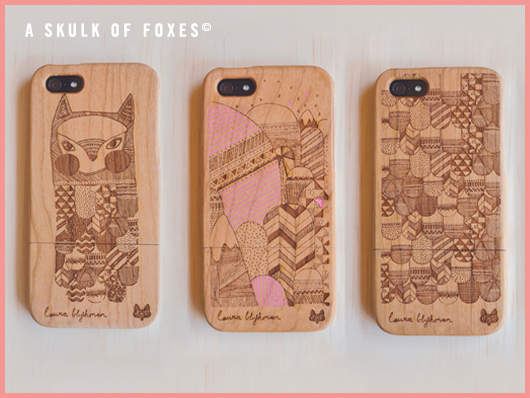
What has been your most favourite project in recent years?
I really loved the opportunity I was given earlier this year to create a new and huge body of work for my solo exhibition (Love, Lyrics, Neon). So many great things, amazing opportunities and collaborations have stemmed from that mammoth effort and collection of work…
Jobs that have elements of both custom illustration and a high level of involvement in creating the brief and setting the style direction for the job are my faves. Illustrating the Geelong Map for The Design Files was a super proud moment. And I loved part one of my collaboration with A Skulk Of Foxes (wooden iPhone covers) so I’m super excited to release some more products with them soon!
What does a typical day at work involve for you?
I only get a few precious full days of work a week so I squeeze as much as possible into these days. The early hours are consumed with trying to convince my 2-year-old that’s it’s a good idea to get dressed, eat something (that isn't dessert) and hop into the car for a fun day at childcare. Neither of us are morning people at all. After I drop him off I grab a drive-thru coffee on the way back to my studio where I park my butt and pretty much don’t move for the rest of day. I begin with consulting the list of ‘to do’s’ (which I generally create the night before) then I cram in an insane amount of emailing, client correspondence, more list making, drawing, planning, scanning, designing, invoice making and estimate creating as well as a bit of making, packing and posting orders from my online shop.
Every day is different and I tend to share the love between a few clients throughout the day. The day always goes waaaay too fast and I find myself also working into the night once my little boy is asleep. The night sessions are mostly saved for my own projects, drawing, packing orders, making custom orders or just catching up on emails… I love the days when I have to travel for meetings or pop out on client or retail visits as I get a bit of change of scenery.
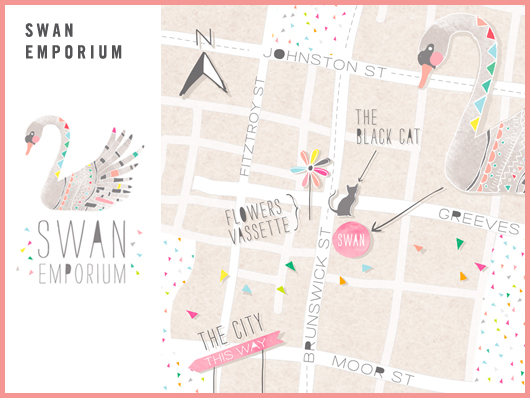
5 Questions in 5 minutes
Getting Personal:
Studio Sounds, what's playing?
At the moment I'm playing a big mix of inc. Theophilus London, Arcade Fire, Chet Faker, Haim, Alpine, Bat For Lashes, The Smiths, Chvches, Yo La Tengo… I can’t work without music.
What are you currently reading?
I’ve just started to read my late Great Aunty Marion’s ‘memoirs’ for the second time. It’s not a published book – it’s just a massive wad of photocopied typed pages in an big black plastic binder – included are some cheeky ‘note’ pages inserted here and there, written by my Pa, Frank. He doesn’t agree with everything Marion recalls and wrote. It’s such a nice insight into the lives of my grandparents and great grandparents.
What are you looking forward to?
- The release of some fun client and collaborative projects I’ve been working on and also starting work on some new exciting projects, collabs and big fun things. Can’t wait to share.
- ‘Fieldtrip’ Jacky Winters creative conference in Sydney! It will be a nice and mini creative break.
- I’m also starting to plan for my first proper holiday in years – hopefully Bali this time next year with my little guy.
Can you share your go to resource for motivation?
- The usual offenders: Instagram, Pinterest
- Creative blogs like: Design Love Fest, Design For Mankind.
- Also love reading design/freelance advice by: Jessica Hische and Bri Emery/Katie Evans.
What is your local area’s best kept secret?
Hmmm… I’m not sure it’s really a secret anymore, but my favourite place in Geelong for a delicious feed, yum drinks, good music and a nice crowd is ‘There There’ – Bar + Restaurant. Love it. I also love heading down the highway to Melbourne for my city culture fix. I can’t wait to move home (Melbourne) in January and discover some cool new places. It feels like I have been away for a very long time.
To see more of Laura's work or make contact with her please visit: website www.laurablythman.com.au webshop www.laurablythman.bigcartel.com email laura@laurablythman.com.au instagram @laurablythman twitter @hellolaurahere facebook www.facebook.com/LauraBlythmanishere
Andrea McArthur has a passion for all things visual. Type is her true love and goes weak at the knees over beautiful design. Andrea works as a freelance graphic designer in Brisbane by day and lectures in graphic design by night. You will find her sharing design related goodness via @andyjane_mc
Tools of the Trade: Fiona McDonald of Ichimu
By Brianna Read The subject of this month’s Tools of the Trade brought up a rather interesting idea in the discussion of creative practice – rules. With every trade comes a history of how the practice has grown and moved with time, there are always long lists of the recognised methods of practice and an equally long list of things which ought not be done. This particular idea was touched upon in an earlier Tools instalment and I was glad for the opportunity to get a little further into the topic – you see I am an advocate of bending and breaking rules… I am making my subject sound rather rebellious which is actually not the case at all.
Fiona McDonald makes objects of porcelain – under the label Ichimu (translated roughly from Japanese meaning a dream, or a fleeting thing). Everything about Fiona’s creative practices are as gentle and light of hand as the name implies. The rule breaking I referred to was from an almost off-hand remark Fiona made about why her ceramic practice brings so much pleasure: ‘Maybe it is because I don’t really know the rules about clay and porcelain that I love it so much.’
I adore these types of honest insights as they reveal so much about why we create. During the interview Fiona made mention of her love of children’s illustrations (those done by children rather than for them) and her appreciation of the honesty they hold. Her remark about not knowing the rules of porcelain and the link this may have to her enjoyment of the process revealed that she found for herself in ceramics what she appreciated in the unfettered and unpretentious expressions of children’s creativity.
Take a look at her work in Ichimu and it is not difficult to see the pleasure taken in creating it. When I asked Fiona to interview for this column I presumed that the effortless beauty in her ceramics had been from years of labored study and crafting with the medium of porcelain. I had no idea Fiona’s background was in fact in graphic design and pattern design for textiles. Indeed, Fiona was introduced to the art of ceramics by a friend relatively recently.
I think it is precisely because of her recent introduction to the medium and an absence of formal training that Fiona’s work stands out. I love that the hand and marks of the tool can be seen in the work – these pieces have a physicality which speaks of their production. Of course, her knowledge of and practice in the visual arts can be seen in her ceramic work. Each piece is hand built using a variety of tools and found objects and the surface treatment and colour sensibility of each collection of pieces clearly displays her talent for design.
While I wholeheartedly appreciate mastery in any medium and understand that rules are made often for very sound reasons; whenever I encounter an artisan who blazes their own trail through a quagmire of dos and don’ts I am reminded of the very reason why creativity exists: because it brings pleasure to those who create and those who behold the results.
Yet another invaluable tool for the kit of any creative: the ability to shirk the rules when they are hampering the enjoyment of the creative process.
More of Fiona’s porcelain work at Ichimu can be seen here and here. Her textile and graphic works have online homes here, here and here.
Brianna Read is a designer/maker based in Melbourne. Her knitwear label Jack of Diamonds employs traditional hand-made techniques in combination with machine knit technologies. Brianna’s multi-faceted creative practice encompasses design, production, works for exhibition and machine knitting workshops.



